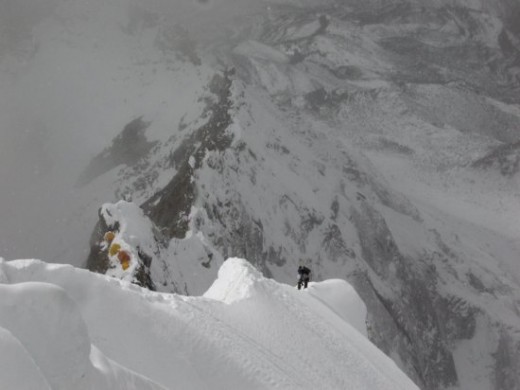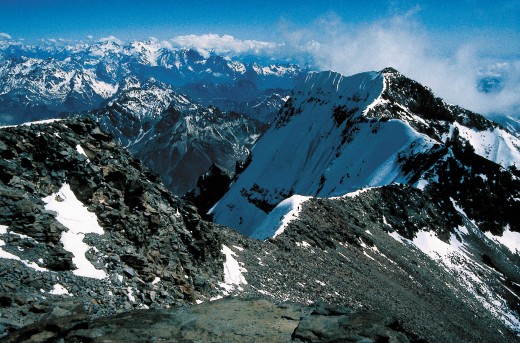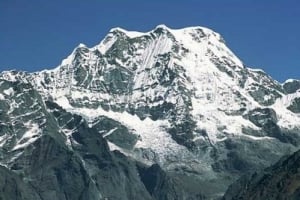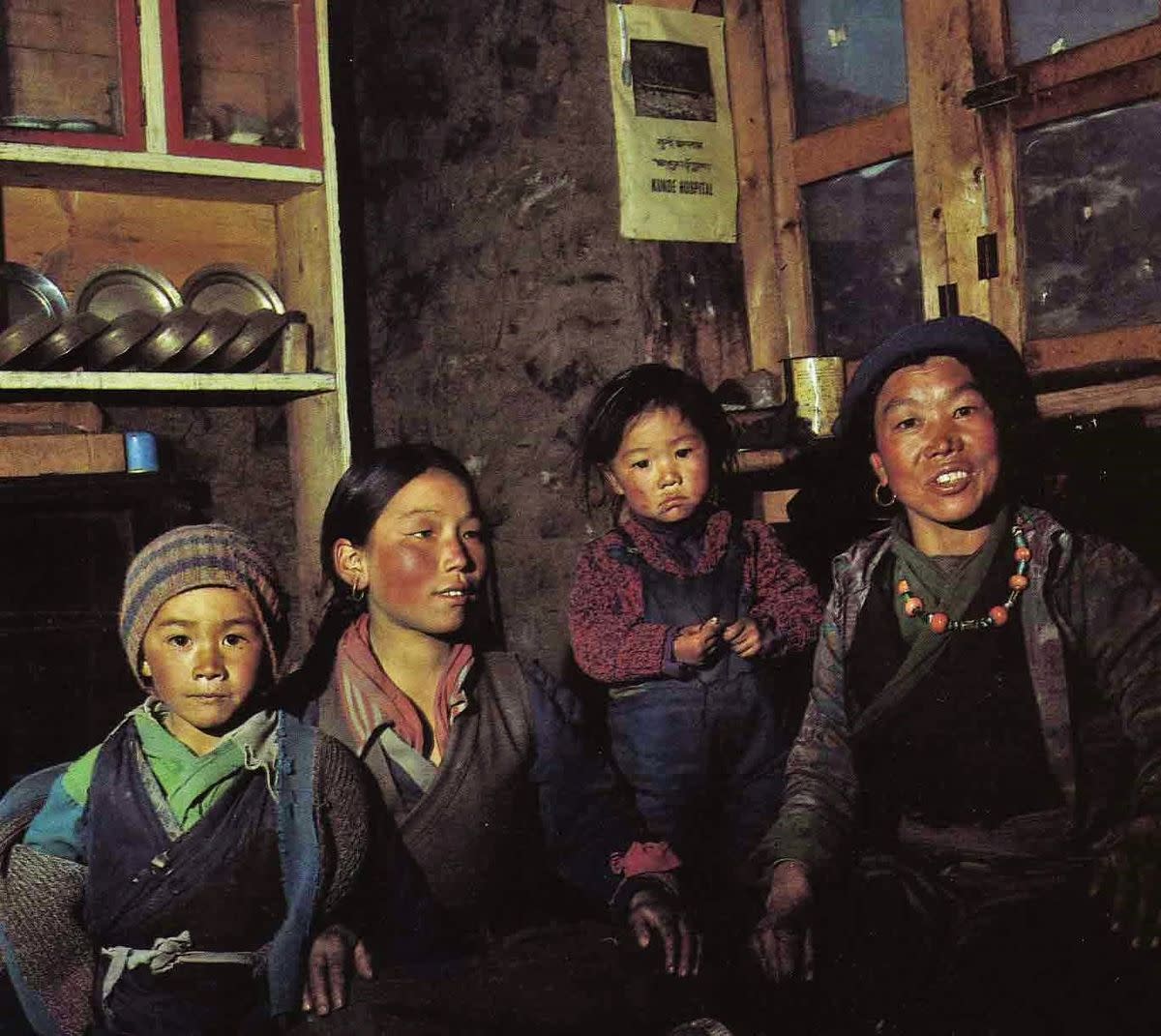High Altitude Climbing - Where to start for beginner mountaineers
Adventure
There is something about mountains that captures the imagination. The sense of adventure, the challenge, the drama. There is a long history filled with courageous episodes, near misses and tragedy. So much has been written about climbers in the greater ranges that it is now a recognized literary genre. Thousands of people every week join the ranks of the "armchair mountaineer" enjoying such classics as Touching the Void, Into thin Air, and The White Spider.
Unlike the early years, international travel is much more accessible to the masses. It is now possible for the average thrill-seeker to taste high altitude mountaineering and see what all the fuss is about.
So what can the novice achieve? Where do you start? And how high is it safe to go?

Everyone has to start somewhere, but before venturing out into a potentially dangerous environment it pays to do your research and prepare.
Alpine climbing is very different from top-roping at your local climbing gym and a Winter Climbing Skills course is a good place to start. As well as giving you an introduction to the snow and ice environment it lets you see if this kind of thing is for you.
Even on a fully guided expedition to a trekking peak, you never know when some basic snowcraft or belay skills will save the day. Learn all you can and if the opportunity presents itself, practice those new skills whenever you get the chance.
Unless you are a proficient winter climber at low altitudes, the quickest way to get a taste of the high altitude experience is to choose a technically easy climb. There are numerous mountains over 6000m that require no specific mountaineering skills that can't be learnt during the trip itself.
Classic Climbing Books

The Top 3 6000m Mountains for Beginners
Climbing to 6000m will definitely give you a feel for what it is like to climb truly big mountains.
Apart from Mount McKinley / Denali (which is way too serious for inexperienced climbers), achieving 6000m means heading to South America or Asia.
- Aconcagua - 6962m - Argentina. The highest mountain outside of Asia. Has multiple routes suitable for the complete novice. Does not have the outrageous beauty of Nepal - you climb this one for the challenge, not the view. The easy terrain leads to regular deaths from altitude sickness as inexperienced climbers ascend too fast. Probably the least expensive option from North America and nowhere near as isolated as other high peaks. Excellent medical support at base camp.
- Mera Peak - 6476m - Nepal. The highest trekking peak in Nepal. An interesting approach through some of the more remote areas of the Khumbu. Straight forward climb up gentle slopes. The highlight is the truly breathtaking views from the summit. 5 of the 6 tallest mountains in the world lined up and the plume of ice crystals from the summit of Everest easily seen. From left to right you can see Cho Oyu, Everest, Lhotse, Makalu, and in the distance the Kangchenjunga massif. It is also possible to return from the mountain via a different route, maximizing your viewing of the stunning Himalayan scenery.
- Imja Tse (Island Peak) - 6189m - Nepal. Significantly steeper and more exposed climbing than Mera Peak give the climb iteslf a more exciting feel. Often both Imja Tse and Mera are targetted on a combined expedition. The vista from the summit is much less comprehensive as although Everest is only 6 miles away, it is not visible as the view is dominated by the imposing south face of Lhotse towering over 2000m above the summit. To make up for it there are great views of Baruntse and Ama Dablam.
Aconcagua

Logistical Preparation
As a novice you will be attempting these mountains as part of an organized expedition. No matter how experienced you are at rock climbing, technical skills don't save you from altitude. You need experienced people around you who can help you decide what is a normal reaction to altitude and what is a warning sign.
Everyone feels bad at altitude but with experience you learn what is normal for your body. Each year novices die as they think that just because you can physically climb higher it is OK. Everyone who suffers Acute Mountain Sickness was physically able to climb that high - their body however was not able to compensate quickly enough.
Unless you are fortunate enough to know experienced mountaineers, an organized tour is the only safe way to get high.
When choosing a company to climb with there are a number of things you need to take into account.
- Length of Expedition: The more time you have the better your chance to acclimatize. For mountains over 6000m there should be multiple rest days in the itinery and at least 2 contingency days for bad weather. The more flexible the itinery, the better your chances of success. Depending on the length of the march in, you are looking at 3 weeks plus for the mountains listed above.
- Experienced guides: These days all serious operators have a website. They should have named leaders on all expeditions with a brief summary of their experience. All reputable operators have multiple staff with significant experience for each trip to 6000m + mountains.
- Time in the industry: Anyone who has been operating for more than ten years has survived on their reputation and level of service they offer.
- Price: I put this last because this is a competitive industry. The cheapest operator is likely to be the one who scores lowest on the previous 3 points. To make money against established players they often have to save money elsewhere with poor equipment and relatively inexperienced guides. No one wants to pay over the odds but remember the cheapest way of reaching the top is to get there safely the first time.
Preparing for a High Altitude Expedition
Physical Preparation
Studies have shown that physical fitness is no guarantee of doing well at altitude. Just because you can run a marathon in 3 hours doesn't mean you can stroll up Everest. Having said that, being in good shape sure makes things easier on the mountain.
Because success at altitude depends on the body's ability to compensate for lack of oxygen, certain people are genetically better suited to height than others. Unless you are of Nepali, Tibetan or Incan descent, the only way you will find out is to head up a hill.
The way I look at it is to assume you will be struggling due to the lack of oxygen. The last thing you need is to add on a lack of physical fitness when you need it most. Due to the cost of expeditions, you generally have plenty of time to prepare. Focus on your goal and get into peak shape.
One final point to add here. I think the most positive aspect of previous marathon experience would be the mental toughness required to succeed. To climb over 6000m you need to be able to tolerate 2 - 3 weeks of feeling like crap. Headache, nausea, lack of apetite, extreme fatigue. Endurance sportsman tend to be in their peak at an older age than other sportsman. I think a significant component of this of this is due to the mental maturity required to deal with extended periods of hardship. Anyone plodding through 26 miles of pavement knows how to find 'the zone' mentally. If you haven't been in 'the zone' before, you will be before you stand above 6000m.
Ready?
So now you're motivated its time to start saving and get in shape.
You need to plan ahead as airfares to Nepal in particular are tricky to secure as everyone arrives at the same time each year: The pre-monsoon season in April & May and post-monsoon season in September and October.
The Aconcagua season is in the southern hemisphere summer of December and January.
If you a ready for the challenge of a lifetime, fire up and do it!
Join Hubpages.com for free to publish articles like this online and earn money.
Click here for more information
The Summit of Aconcagua - Achievable for beginners
Mera Peak

Basic Mountaineering Skills - The type of techniques taught on a Winter Skills Course
Useful Climbing Links
- Altitude sickness
Unlike some factors in mountaineering, the risk of altitude sickness can be decreased by a good understanding of the signs, symptoms and treatment of this condition. It is irresponsible to travel to altitude without doing your research. - Buy a dry bag online - Waterproof Dry Bags by SealLine, Watershed
Water is one of the main reasons many people love the outdoors. Unfortunately, much of your equipment will be worse off for meeting it, this is where a dry bag can help. - Buy a Headlamp Online - Petzl, Black Diamond, Princeton Tec
Any outdoor trip that involves an overnight stay needs a reliable light source. Headlamps provide hands-free illumination centred on your field of vision. The previous problem that greatly limited their use...







